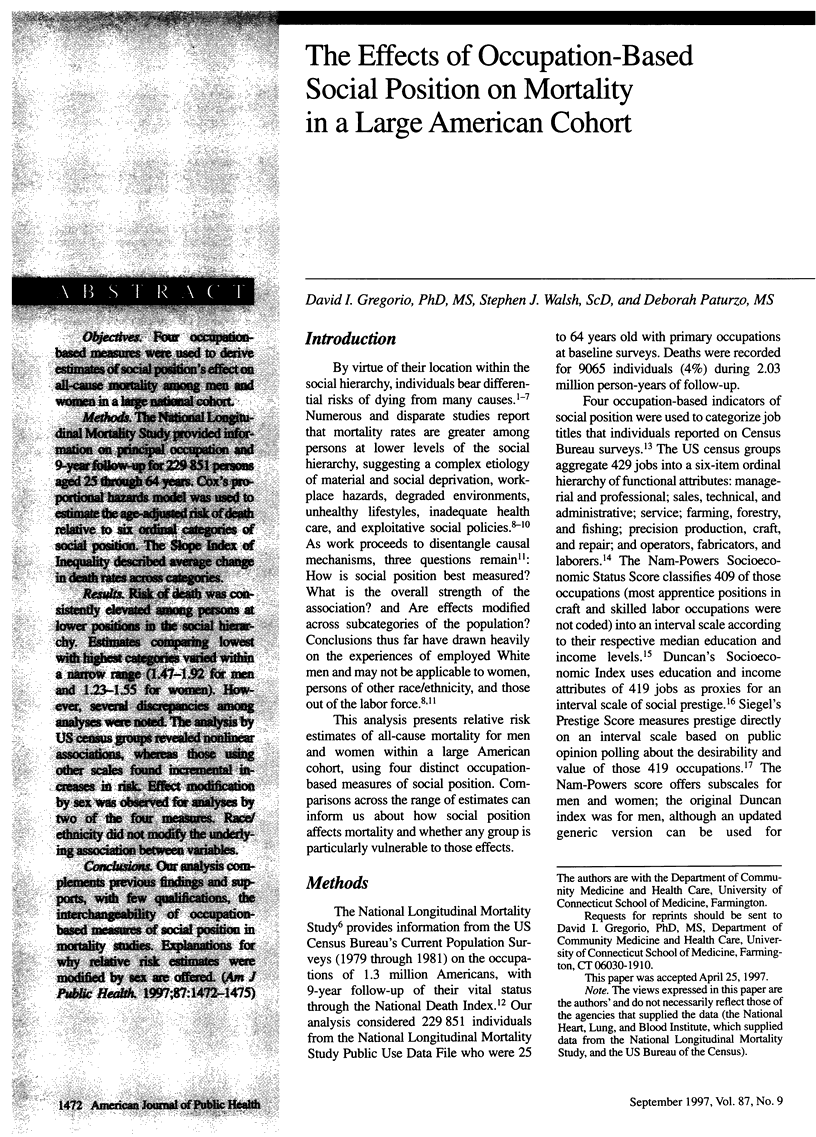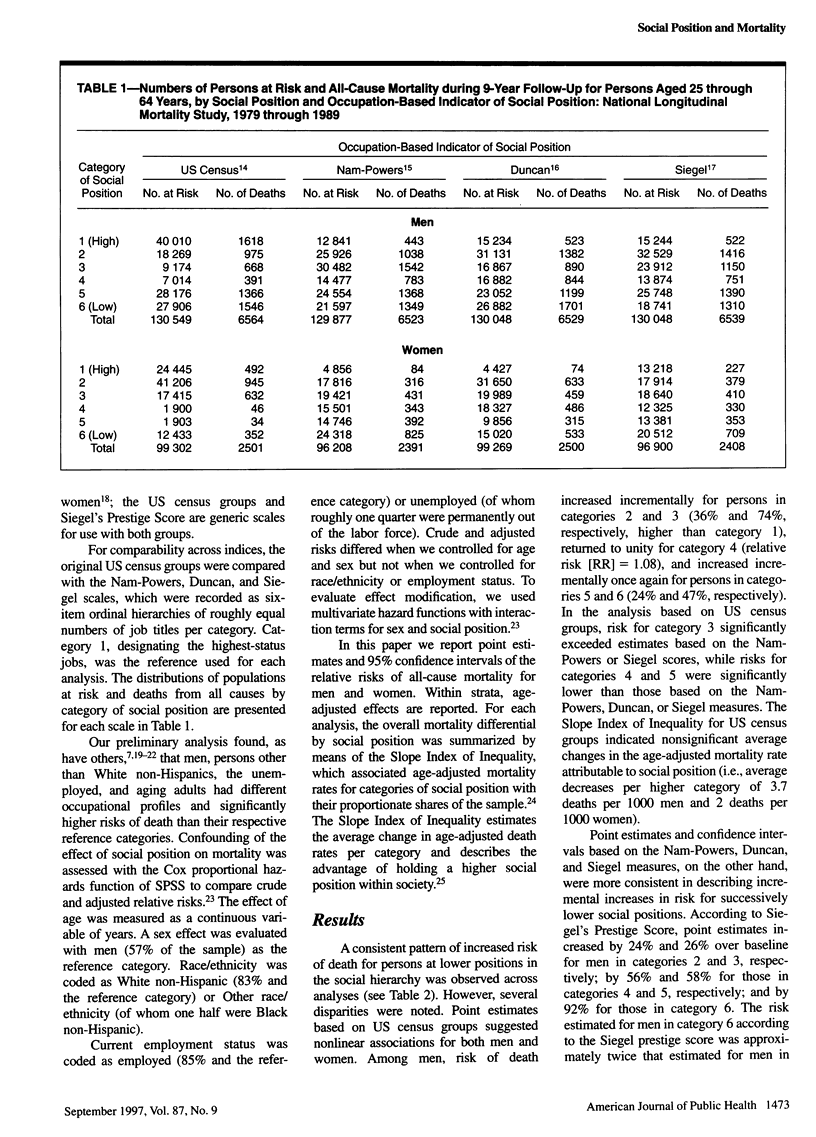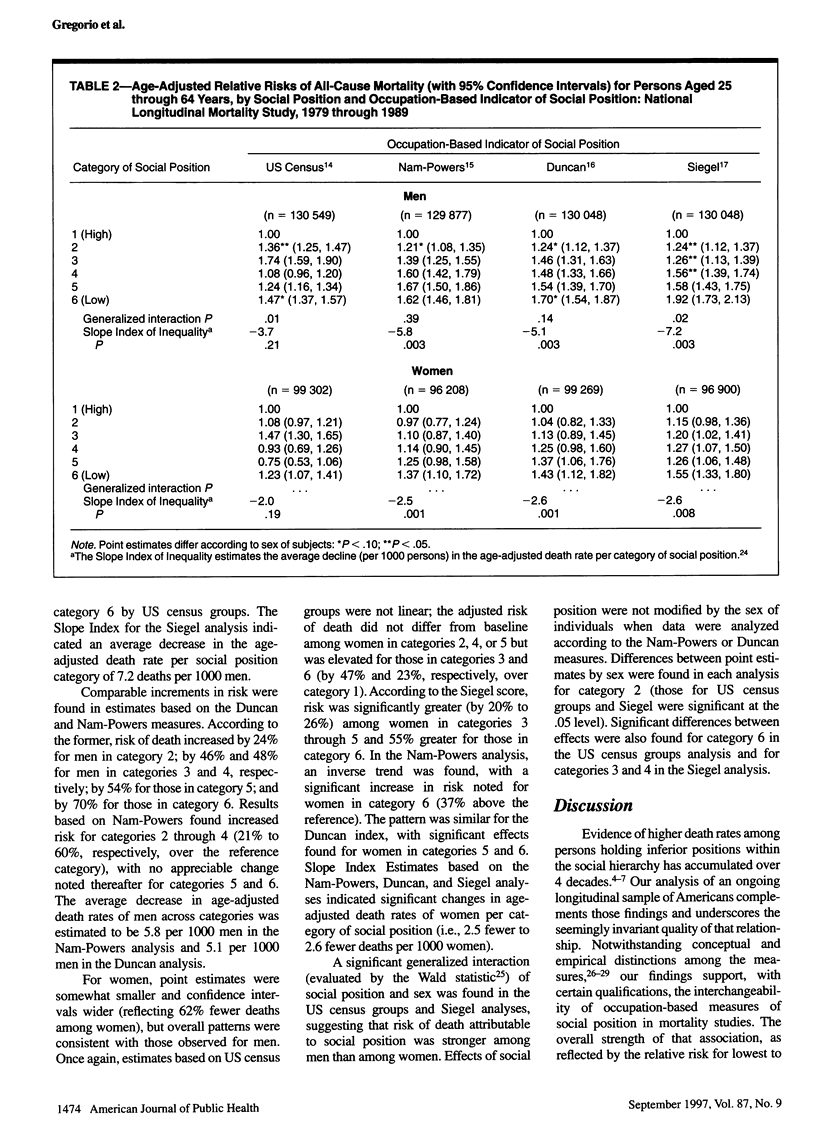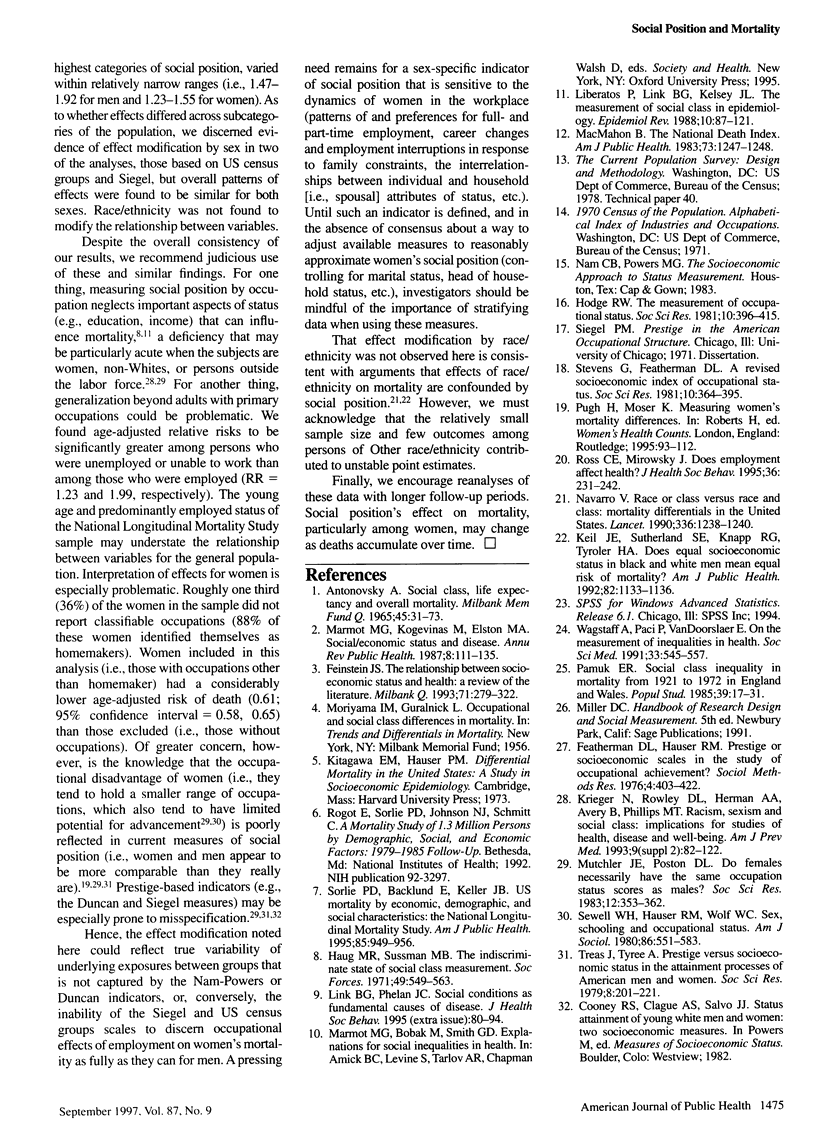Abstract
OBJECTIVES: Four occupation-based measures were used to derive estimates of social position's effect on all-cause mortality among men and women in a large national cohort. METHODS: The National Longitudinal Mortality Study provided information on principal occupation and 9-year follow-up for 229,851 persons aged 25 through 64 years. Cox's proportional hazards model was used to estimate the age-adjusted risk of death relative to six ordinal categories of social position. The Slope Index of Inequality described average change in death rates across categories. RESULTS: Risk of death was consistently elevated among persons at lower positions in the social hierarchy. Estimates comparing lowest with highest categories varied within a narrow range (1.47-1.92 for men and 1.23-1.55 for women). However, several discrepancies among analyses were noted. The analysis by US census groups revealed nonlinear associations, whereas those using other scales found incremental increases in risk. Effect modification by sex was observed for analyses by two of the four measures. Race/ ethnicity did not modify the underlying association between variables. CONCLUSIONS: Our analysis complements previous findings and supports, with few qualifications, the interchangeability of occupation-based measures of social position in mortality studies. Explanations for why relative risk estimates were modified by sex are offered.
Full text
PDF



Selected References
These references are in PubMed. This may not be the complete list of references from this article.
- Antonovsky A. Social class, life expectancy and overall mortality. Milbank Mem Fund Q. 1967 Apr;45(2):31–73. [PubMed] [Google Scholar]
- Feinstein J. S. The relationship between socioeconomic status and health: a review of the literature. Milbank Q. 1993;71(2):279–322. [PubMed] [Google Scholar]
- Keil J. E., Sutherland S. E., Knapp R. G., Tyroler H. A. Does equal socioeconomic status in black and white men mean equal risk of mortality? Am J Public Health. 1992 Aug;82(8):1133–1136. doi: 10.2105/ajph.82.8.1133. [DOI] [PMC free article] [PubMed] [Google Scholar]
- Krieger N., Rowley D. L., Herman A. A., Avery B., Phillips M. T. Racism, sexism, and social class: implications for studies of health, disease, and well-being. Am J Prev Med. 1993 Nov-Dec;9(6 Suppl):82–122. [PubMed] [Google Scholar]
- Liberatos P., Link B. G., Kelsey J. L. The measurement of social class in epidemiology. Epidemiol Rev. 1988;10:87–121. doi: 10.1093/oxfordjournals.epirev.a036030. [DOI] [PubMed] [Google Scholar]
- Link B. G., Phelan J. Social conditions as fundamental causes of disease. J Health Soc Behav. 1995;Spec No:80–94. [PubMed] [Google Scholar]
- MacMahon B. The National Death Index. Am J Public Health. 1983 Nov;73(11):1247–1248. doi: 10.2105/ajph.73.11.1247. [DOI] [PMC free article] [PubMed] [Google Scholar]
- Marmot M. G., Kogevinas M., Elston M. A. Social/economic status and disease. Annu Rev Public Health. 1987;8:111–135. doi: 10.1146/annurev.pu.08.050187.000551. [DOI] [PubMed] [Google Scholar]
- Navarro V. Race or class versus race and class: mortality differentials in the United States. Lancet. 1990 Nov 17;336(8725):1238–1240. doi: 10.1016/0140-6736(90)92846-a. [DOI] [PubMed] [Google Scholar]
- Pamuk E. R. Social class inequality in mortality from 1921 to 1972 in England and Wales. Popul Stud (Camb) 1985 Mar;39(1):17–31. doi: 10.1080/0032472031000141256. [DOI] [PubMed] [Google Scholar]
- Sorlie P. D., Backlund E., Keller J. B. US mortality by economic, demographic, and social characteristics: the National Longitudinal Mortality Study. Am J Public Health. 1995 Jul;85(7):949–956. doi: 10.2105/ajph.85.7.949. [DOI] [PMC free article] [PubMed] [Google Scholar]
- Wagstaff A., Paci P., van Doorslaer E. On the measurement of inequalities in health. Soc Sci Med. 1991;33(5):545–557. doi: 10.1016/0277-9536(91)90212-u. [DOI] [PubMed] [Google Scholar]


